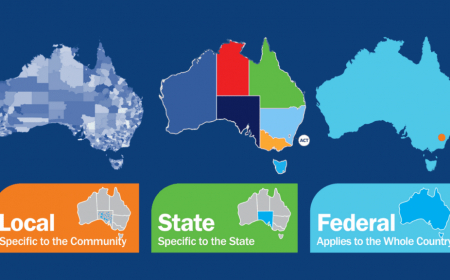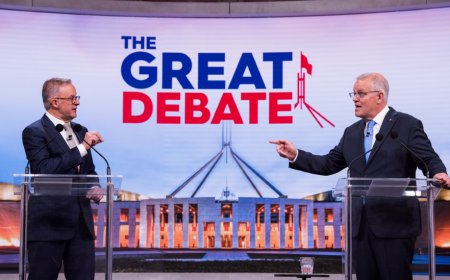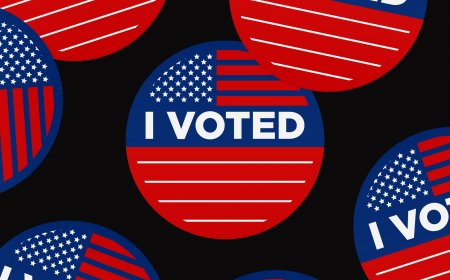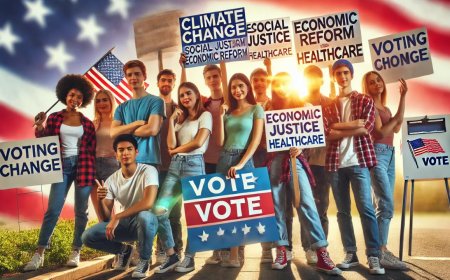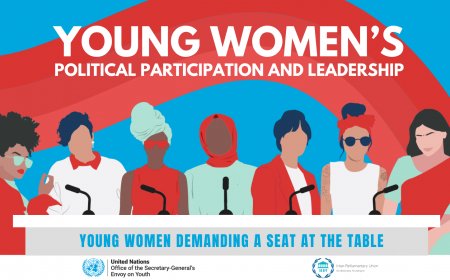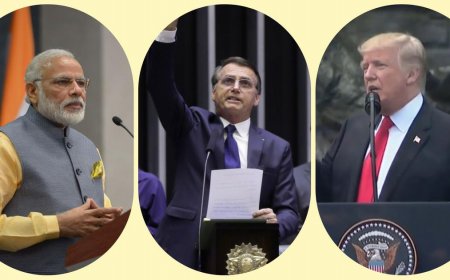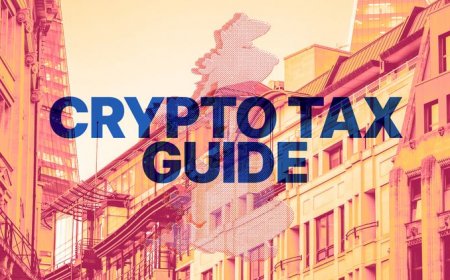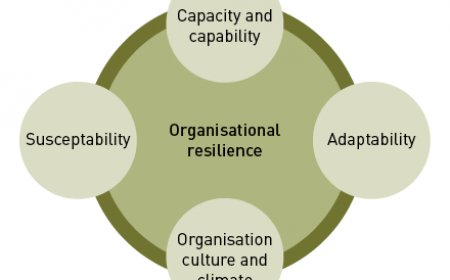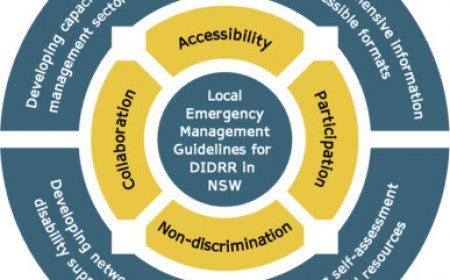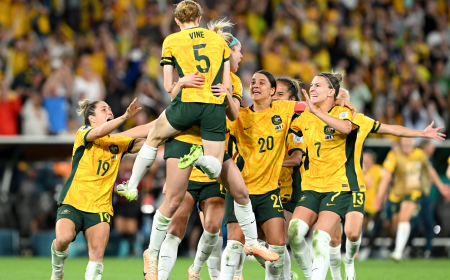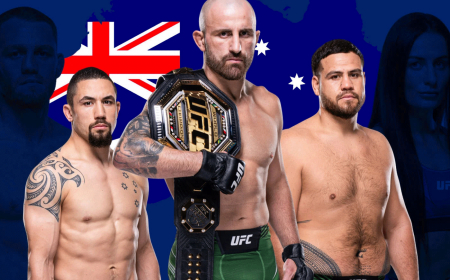US Elections: Third-Party Candidates and Their Impact
Explore the pivotal role of third-party candidates in US elections, their historical significance, modern-day relevance, and potential to reshape political landscapes. Understand their challenges, successes, and impact on electoral outcomes.
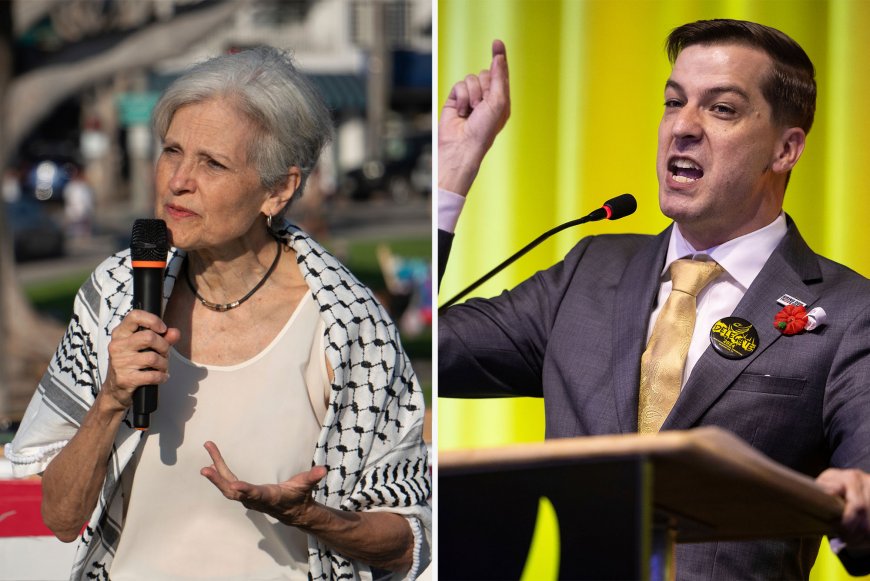
In the ever-evolving landscape of American politics, third-party candidates have consistently played a pivotal role in shaping electoral outcomes. While the two-party system dominated by Democrats and Republicans remains deeply entrenched, third-party candidates often serve as catalysts for change, introducing new ideas, challenging established norms, and influencing voter behavior. This article delves into the historical significance, modern-day relevance, and potential future impact of third-party candidates on US elections. By exploring their contributions, challenges, and successes, we aim to provide a comprehensive understanding of how these candidates influence the democratic process.
The Role of Third-Party Candidates in US Elections
Historical Context of Third Parties
Third parties have been a part of the American political fabric since the nation's founding. From the Anti-Masonic Party in the 1820s to the Progressive Party in the early 20th century, these entities have emerged during periods of societal upheaval or dissatisfaction with the status quo.
The Anti-Masonic Party: A Pioneer Movement
The Anti-Masonic Party , formed in the late 1820s, is widely regarded as the first third party in American history. It arose in response to growing public distrust of secret societies, particularly Freemasonry, which was perceived as wielding undue influence over government and society. Though its primary focus was opposition to Freemasonry, the party also championed causes like transparency in governance and expanded suffrage. Its brief but impactful existence paved the way for subsequent third-party movements.
The Populist Party: Advocates for the Common Man
Fast forward to the late 19th century, and the Populist Party (also known as the People’s Party) emerged as a formidable force advocating for agrarian interests and labor rights. Formed in 1891, this party represented farmers, factory workers, and other marginalized groups who felt abandoned by the major parties. The Populists called for reforms such as the direct election of senators, graduated income tax, and regulation of railroads. Although the party dissolved after the 1896 election, many of its policies were later adopted by the Democratic Party under William Jennings Bryan.
Theodore Roosevelt and the Bull Moose Party
Perhaps one of the most dramatic examples of third-party influence came in 1912 when former President Theodore Roosevelt ran as the candidate for the Progressive Party , nicknamed the “Bull Moose Party.” Dissatisfied with the Republican Party’s conservative direction under incumbent William Howard Taft, Roosevelt launched a vigorous campaign focused on progressive reforms, including women’s suffrage, labor protections, and environmental conservation. His candidacy split the Republican vote, enabling Democrat Woodrow Wilson to win the presidency. Despite losing, Roosevelt’s campaign left an indelible mark on American politics, pushing both major parties toward more progressive stances.
Modern-Day Relevance
In contemporary elections, third-party candidates continue to make waves. Figures like Ross Perot, who ran as an independent in 1992 and 1996, demonstrated that a well-funded campaign could capture significant portions of the electorate. Perot’s focus on fiscal responsibility and government reform resonated with millions of Americans, earning him nearly 19% of the popular vote in 1992.
Ross Perot: A Self-Funded Phenomenon
Ross Perot’s 1992 campaign was groundbreaking in several ways. Unlike traditional politicians reliant on party machinery, Perot self-financed his bid, spending over $60 million of his own money. He utilized innovative strategies, including televised infomercials, to bypass mainstream media and communicate directly with voters. His emphasis on reducing the national debt, reforming trade agreements like NAFTA, and combating government inefficiency struck a chord with disillusioned citizens. Though he did not win any electoral votes, Perot’s performance highlighted widespread dissatisfaction with the status quo.
Jill Stein and Gary Johnson: Voices of the Fringe
More recently, candidates like Jill Stein of the Green Party and Gary Johnson of the Libertarian Party have drawn attention to issues such as climate change, civil liberties, and limited government intervention. In the 2016 election, Stein garnered over 1.4 million votes, while Johnson received nearly 4.5 million. Both campaigns emphasized themes largely ignored by the major parties, showcasing the enduring appeal of alternative voices.
Impact of Third-Party Candidates on Electoral Outcomes
Swing Votes and Spoiler Effects
One of the most debated aspects of third-party candidacies is their potential to act as "spoilers." In closely contested elections, votes diverted to third-party candidates can tip the balance in favor of one major party over another. The 2000 presidential election serves as a prime example, where Ralph Nader’s Green Party candidacy is often cited as a factor in Al Gore’s loss to George W. Bush.
The 2000 Election Controversy
Ralph Nader’s platform centered on environmental protection, corporate accountability, and social justice. However, critics argue that his presence on the ballot siphoned crucial votes away from Gore, particularly in Florida, where Bush won by just 537 votes. While Nader rejected the label of spoiler, the controversy underscores the delicate balance of power in winner-takes-all systems.
Beyond the Spoiler Narrative
It is important to note that attributing electoral outcomes solely to third-party candidates oversimplifies the complexities of voter behavior. Many individuals who support third parties do so out of genuine ideological alignment rather than as a protest against the major parties. For instance, voters who chose Jill Stein in 2016 likely prioritized her stance on climate action over strategic considerations.
Shifting Political Discourse
Beyond their direct electoral impact, third-party candidates play a crucial role in expanding the national conversation. By advocating for policies outside the mainstream, they force major parties to address issues they might otherwise ignore. For example, Bernie Sanders’ 2016 Democratic primary campaign, though not technically a third-party effort, brought topics like income inequality and universal healthcare to the forefront of political discourse.
Andrew Yang and Universal Basic Income
Another notable example is Andrew Yang’s 2020 presidential bid, which introduced concepts such as universal basic income (UBI) to a wider audience. Yang argued that UBI could mitigate the economic disruptions caused by automation and globalization. Even after his campaign ended, UBI remained a topic of discussion among policymakers and economists, illustrating the lasting influence of third-party platforms.
Challenges Faced by Third-Party Candidates
Structural Barriers
Third-party candidates face numerous obstacles that hinder their ability to compete effectively. One significant barrier is the winner-takes-all electoral system , which disproportionately benefits the two dominant parties. Unlike proportional representation systems used in some countries, the US allocates electoral votes based on plurality, making it exceedingly difficult for third parties to win seats.
Ballot Access Laws
Additionally, stringent ballot access laws vary widely across states, requiring candidates to gather thousands of signatures or meet other demanding criteria. These requirements place an undue burden on smaller parties with limited resources. For example, Texas mandates that independent candidates collect signatures equal to 1% of the total votes cast in the last gubernatorial election—a daunting task for newcomers.
Media Coverage and Funding Disparities
Another challenge lies in securing equitable media coverage and campaign funding. Major parties enjoy extensive support from established networks, donors, and institutions, leaving third parties struggling to gain visibility. Without sufficient exposure, even the most compelling platforms struggle to reach a broad audience.
Debate Exclusion
Moreover, debates organized by the Commission on Presidential Debates (CPD) often exclude third-party candidates unless they meet specific polling thresholds. This exclusion further marginalizes their campaigns and limits opportunities for public engagement. Critics argue that the CPD’s criteria are designed to maintain the dominance of the two major parties.
Success Stories of Third-Party Candidates
Despite the odds stacked against them, several third-party candidates have achieved notable successes throughout history. These victories, whether measured in terms of votes garnered or policy changes influenced, demonstrate the potential for meaningful impact.
Case Study: Ross Perot
Ross Perot’s 1992 campaign remains one of the most remarkable achievements by a third-party candidate in recent memory. Running as an independent, Perot focused on reducing the national debt, reforming trade policies, and combating government inefficiency. His straightforward style and use of infomercials to communicate directly with voters set him apart from traditional politicians.
Although he did not win any electoral votes, Perot’s performance highlighted widespread dissatisfaction with both major parties. His emphasis on fiscal responsibility also pressured subsequent administrations to prioritize budgetary discipline.
The Future of Third Parties in US Politics
As societal values evolve and technological advancements reshape communication, the prospects for third-party candidates may improve. However, achieving sustained success will require overcoming entrenched barriers and fostering greater inclusivity within the political system.
Potential Reforms
Several proposals could enhance opportunities for third parties. Implementing ranked-choice voting (RCV), for instance, allows voters to rank candidates in order of preference, reducing fears of “wasting” votes on less viable options. Maine and Alaska have already adopted RCV, demonstrating its feasibility at the state level.
Expanding access to public financing for campaigns could also level the playing field, enabling third parties to compete more equitably. Furthermore, revising debate qualification rules to include a broader range of perspectives would ensure that voters hear diverse viewpoints.
Conclusion
Third-party candidates occupy a unique space within the American political ecosystem. Though frequently overshadowed by the Democratic and Republican juggernauts, they contribute invaluable perspectives and drive critical conversations. Whether through challenging entrenched ideologies, influencing policy agendas, or inspiring grassroots movements, their impact extends far beyond mere vote tallies.
To fully realize the promise of a truly representative democracy, it is imperative to address the structural inequities that constrain third parties. By embracing reforms and amplifying marginalized voices, we can foster a political environment where all citizens feel empowered to participate meaningfully.
FAQs
-
What qualifies someone as a third-party candidate? A third-party candidate runs under a party other than the Democratic or Republican parties.
-
How do third-party candidates affect election results? They can sway outcomes by drawing votes away from major party candidates or shifting the political narrative.
-
Why don’t third-party candidates win more often? Structural barriers, lack of funding, and limited media coverage hinder their chances.
-
Has any third-party candidate ever won the presidency? No, but several have influenced elections significantly, such as Theodore Roosevelt in 1912.
-
What is ranked-choice voting, and how does it help third parties? Ranked-choice voting lets voters rank candidates, reducing concerns about wasted votes.
-
Are there successful third-party governors or senators? Yes, figures like Jesse Ventura and Bernie Sanders have held office as independents or third-party members.
-
Do third-party candidates receive federal funding? Only if they qualify under strict criteria, which few manage to meet.
-
How can third parties increase their visibility? Through grassroots organizing, leveraging social media, and participating in local elections.
-
What are common criticisms of third parties? Critics argue they fragment the electorate and dilute the effectiveness of opposition to incumbents.
-
Can third parties survive without major reforms? It’s challenging, but innovative strategies and shifting demographics offer hope for growth.
What's Your Reaction?
 Like
0
Like
0
 Dislike
0
Dislike
0
 Love
0
Love
0
 Funny
0
Funny
0
 Angry
0
Angry
0
 Sad
0
Sad
0
 Wow
0
Wow
0



